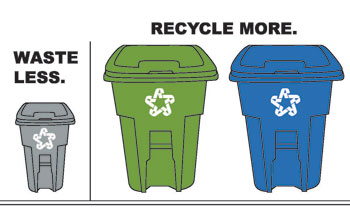
Legislation to enforce garbage recycling
The Government will, within two months, introduce legislation to enforce the recycling of garbage, informed sources said yesterday. They said the Prime Minister was monitoring the progress of the new Bill, which is now under preparation.
“Sri Lanka is one of the few countries in Asia that does not have specific laws pertaining to recycling of garbage and therefore the government has decided to introduce laws pertaining to this issue,” a source said adding that this matter was being expedited in the aftermath of the Meethotamulla tragedy which killed more than 30 people. (Yohan Perera) .
Source – 23/04/2017, Daily mirror See more at: http://www.dailymirror.lk/article/Legislation-to-enforce-garbage-recycling-127585.html#sthash.ZLeuud9h.dpuf
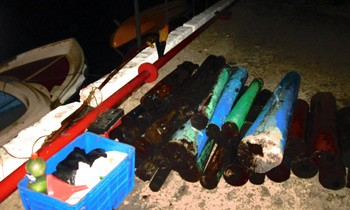
One arrested with 511 kgs of red sandalwood
An individual, who attempted to smuggle 511 kgs of red sandalwood into the country from India via sea, was arrested by the Navy today. The suspect was arrested on receipt of intelligence information to the Navy.
The Navy said the search operation was carried out in the Anawasala area in Kalpitiya and the racketeer was nabbed along with the dinghy used for the transportation of the high – valued red sandalwood stock. The suspect and the stock of red sandalwood were handed over to the Sri Lanka Customs Sub-Preventive Office in Sinnapadu for legal action.
Source – 23/04/2017, Dailymirror, See more at: http://www.dailymirror.lk/article/One-arrested-with-kgs-of-red-sandalwood-127602.html#sthash.kpJfD9xV.dpuf
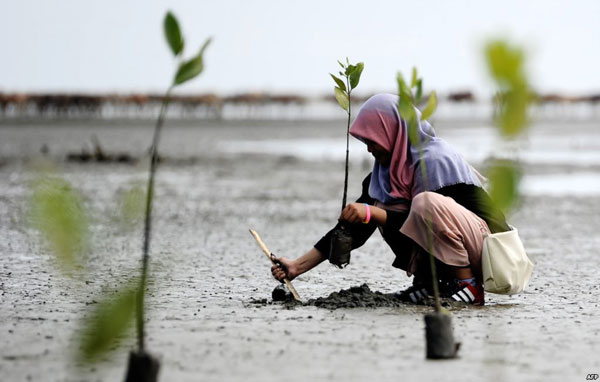
Earth Day observed around the world
Earth Day was observed around the world yesterday with tree plantings, exhibits, cleanups and protests. Members of an ecologist group known as ”Comando Borraja” (Borage Commando) plant some vegetables and flowers in a street of Tudela village, northern Spain, in commemoration of Earth Day, April 22, 2017.
Source – 23/04/2017, Dailymirror,- See more at: http://www.dailymirror.lk/article/Earth-Day-observed-around-the-world-127603.html#sthash.cNNlEJuN.dpuf
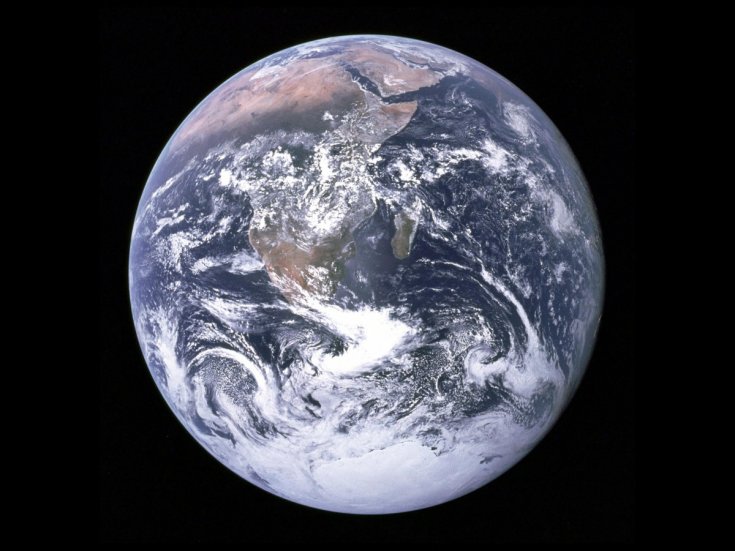
Earth Day is celebrated on 22 April 2017 in the hope of boosting climate literacy.
Earth Day is celebrated every year on 22 April, to honour our planet and shed a light on environmental issues that matter. It promotes an ideal of peace and sustainability for all.
This year’s campaign is dedicated to an ambitious goal – to achieve global climate and environmental literacy in the space of three years, by Earth Day 2020.
Source – 21/04/2017,International Business Times, see more at – http://www.ibtimes.co.uk/earth-day-2017-theme-events-all-you-need-know-about-global-campaign-1617809
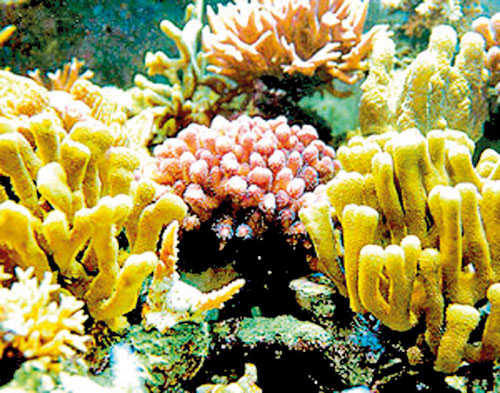
Marine pollution around Sri Lanka and the inevitable environmental disaster
By Carmel Corea
The National Geographic Magazine April 2017 issue carries a satellite image showing the polluted waters around Sri Lanka. This irrefutable evidence indicates a possible environmental disaster for Sri Lanka’s coral reefs.
Coral reefs protect Sri Lanka from natural disasters and are essential for sustaining this country’s fishing industry. The tourism industry boldly advertises Sri Lanka’s pristine beaches and states, “Investors favour coastal belt tourism development’.
In view of recent research, environmentalists warn that unless urgent measures are taken to control marine pollution, the financial loss and income downturn to the country will be inevitable.
What is marine pollution?
Marine pollution occurs when harmful or potentially harmful chemicals, materials, pathogens or disruptive activities invade the oceans. Eighty percent of marine pollution comes from the land. Air, too, contributes by carrying pesticides, toxic gases, hot air and sound, all proven to be harmful to marine life and habitats.
Greenpeace UK’s senior ocean campaigner Louise Edge says more than 12 million tons of plastic end up in the oceans each year.
Sri Lanka is the world’s fifth worst ocean plastic polluter, with China topping the list. Fisherman say pollution is killing marine life and their livelihood.
The United Nations will hold an Ocean Conference from June 5 to 9 to reverse the decline in the health of oceans for the benefit of the people and the planet.
Global warming stresses the environment
Global warming — due to an increase in greenhouse gases (GHG) such as carbon dioxide produced mainly by anthropogenic (human) activities — is causing climate change.
Records indicate atmospheric carbon levels increased from 280 to 400 parts per million from 1750 to 2015, resulting in atmospheric warming.
Researches state that our oceans absorb about 30 million tons of carbon dioxide every day changing the chemistry of the sea and increasing its acidification.
This reduces sea water’s carrying capacity for calcium carbonate needed by corals and other marine organisms to build their exoskeletons. Hence coral reefs are under survival threat and need careful management.
Sri Lanka formally ratified the Paris Agreement to limit GHG emissions on April 22 last year.
The importance of coral reefs to Sri Lanka
Coral reefs are vital for Sri Lanka’s economy. They are the ‘rain forest of the sea’ — the most bio-diverse and productive ecosystem on earth, occupying only 0.2% of the ocean, yet home to a quarter of all marine species. More than 4000 species of fish make coral reefs their home. Corals can only exist within a narrow band of environmental conditions found in tropical and subtropical waters. The water temperature must remain ideally between 23C and 29C (or 77F and 84F).
The conditions needed for coral survival are found in the seas surrounding Sri Lanka. This makes Sri Lanka a unique island, with potential for developing into a high foreign income generating eco-tourist resort.
Coral reef destruction and sewage pollution
Dr. Stephanie Wear, the Nature Conservancy (USA) lead scientist for coral conservation, has carried out extensive research on marine pollution. She says, “When you think of the top threats to coral reefs sewage isn’t usually at the top of the list. Climate change and over fishing are the more familiar hazards, but pollution from untreated sewage is a serious threat to reefs and the services they provide for marine life and people.”
Dr.Wear elaborates that some of the greatest sewage pollution in the world occurs in developing countries, where most coral reefs exist. It appears that the infrastructure in sewage waste management in these countries may be old, and poorly maintained – and that causes untreated sewage to be pumped into the sea.
A similar situation exists in Sri Lanka. Nihal Fernando, Project Director (Colombo Port City) and Urban Development Authority Director, in an article published in this newspaper on June 19 last year states, “… thousands of metric tonnes of raw sewage are annually discharged to sea.”
Source – 09/04/2017, The suinday Times , See more at – http://www.sundaytimes.lk/170409/sunday-times-2/marine-pollution-around-sri-lanka-and-the-inevitable-environmental-disaster-236258.html
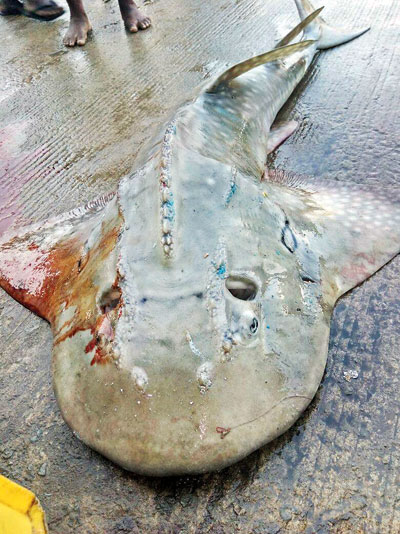
Rare bottom-dweller is a vulnerable fish
The Shark Ray or Guitar fish with fins similar to that of sharks and upper body similar to a ray
In the animal kingdom, there are species that look alike, or ‘hybrids’, between two or more creatures. Marine creatures with such features often go unnoticed, but the fish caught in nets off the southern coast puzzled many as it appeared like a shark and a ray (‘mora’ and ‘maduwa’ in Sinhala, respectively).
This strange fish had ‘shark like’ fins and tail. However, its head looks like a ray and had ray-like ‘wings’. The fish photographed by Devsiri Peiris last month is said to have been caught accidentally in a fishing net. It is about five feet long and a male.
“It is a fish we call ‘shark ray’, known by fishermen as ‘thith mora’’’, says Rex I. De Silva – an expert on sharks. “Despite its Sinhala name, it is not a shark but a ray,’’ he says.
The shark ray is scientifically named as Rhina ancylostoma also called mud skate as it is found in sandy bottoms doing bottom feeding. Due to the shape of its head the fish in this group is also known as ‘guitarfish’. The one caught is a Bowmouth Guitarfish. According to literature, this large species can reach a length of 2.7 m (8.9 ft) and weight of 135 kg (298 lb). They are found in depths of up to 90 m (300 ft).
Shark expert, Mr de Silva says the species is rare. “Nevertheless the species appears in very small numbers from time-to-time in fish markets. I have seen them at Negombo, Kalmunai and Kirinda markets,” Mr De Silva says.
The Red List of Threatened Fauna by IUCN categorises the shark ray as ‘Vulnerable’ to extinction. Other than getting caught in fishing nets, dynamite fishing, bottom trawling pose a threat to shark rays. Habitat degradation and destruction too threaten this rare fish.
Source – 09/04/2017/ The Sunday Time, See more at – http://www.sundaytimes.lk/170409/news/rare-bottom-dweller-is-a-vulnerable-fish-236477.html

Body of Dolphin found with rear fins cut off
Wildlife officers have discovered the body of a Dolphin floating inside the Hambantota Fisheries Harbor. Officers said the dolphin’s rear fins had been severed.
It is suspected that the dolphin had got caught in a fishin net but had been brought ashore by the fishermen rather than being released back into the sea. Wildlife officers said they had previously discovered dead sear turtles who had also gotten caught in the nets of fishermen.
They warn that despite a ban on the killing of dolphins, there was still an underground trade in the sale of dolphin meat.
While no comprehensive survey has been carried out regarding dolphin populations off the island’s shores, the Marine Environment Protection Authority estimates there are some 10,000 dolphins around the regions of Trincomalee, Kalpitiya and Mirissa.
source – 20/04/2017, Times Online, See more at – http://www.sundaytimes.lk/article/1020312/body-of-dolphin-found-with-rear-fins-cut-off
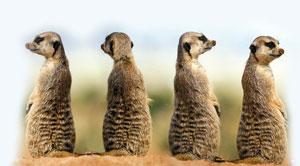
Toilet habits in the animal kingdom
A human eats, defecates, reproduces and dies. And in between tries to give meaning to his life by being as destructive as he can of everything around him. An animal also eats, defecates, reproduces and dies and leaves the planet intact.
Whom would God choose, I wonder, to enter his heaven?
Human beings have no respect for their own defecation, nor does it really matter where they go: in communal bathrooms, in individual ones or in the open. They eat and drink so badly that their faeces stink and spread disease. Even the poo of a little baby is full of harmful bacteria.
But animals, especially wild ones, are particular. Many species choose communal latrine areas to defecate and urinate; they include raccoons, badgers, hyenas, elephants, antelopes, deer, lizards and horses. In fact a 240 million-year-old defecation site of the Dinodontosaurus, found in 2013 in Talampaya National Park, Argentina, has been called the world’s oldest public toilet. Hyraxes and moles, which live underground, come above ground to defecate on sites that become dunghills. These sites also become territorial markers for the group to warn off other groups from the area. These toilets are at strategic locations, away from where the animals feed and sleep.
Are humans the only ones who build bathrooms? Social insects, like the Black Garden Ant, use specialized toilet area in their own nests – just like us. Jerdon’s Jumping Ants build refuse chambers in their nests, well below their living areas. Faeces and waste, such as uneaten food, are dumped there. Leaf cutter ants deposit their faeces in a pile outside their nests and have a special group of ants whose only job is to deal with the waste. Spider mites weave nests and all the nest members defecate only at one site inside the nest.
Each living being (apart from humans who defecate in the same fields they grow crops in and next to the water pumps they drink from) believes in sanitation. Horses and other grazing animals use dedicated latrine areas so that grazing areas are kept pollution and parasite free.
Going one step further, antelopes deliberately defecate on exposed sites which are nutrient deficient, like sandy soil or rocky areas. Their faeces enrich the soil and deposit undigested plant seeds.
What are the elimination habits of some species?
When it becomes very hot, vultures defecate on their own legs. The principle is the same as sweat— as the liquid evaporates it cools their skins.
Caterpillars shoot their granola flake size faeces (insect faeces is called frass) out of their rear ends with such force that it lands 40 times their length, away. This rocket disposal avoids attracting carnivorous ants.
White footed Lemurs, which live in Madagascar, stay in loose knit families. They move around independently at night and live on separate trees. But to stay in touch, and communicate information, the entire family defecates at the same clump of trees which is in the centre of their territory. The lemur clings to the tree trunk, lifts its tail up and drops the faeces to the ground. By sniffing these trees, family members exchange information. The males also leave scents from their scent glands which warn off other non- family lemurs. Dwarf lemurs smear their faeces on branches of trees, creating a thick build-up. Bamboo lemurs create communal toilets around the trees where they sleep or eat. By doing this, the animals focus on defending important resources, instead of the entire territory.
Northern Collared Lemmings have faeces that glows ultraviolet, which birds of prey can see, so they build underground toilets in order to avoid predators.
Meerkats, underground squirrel like creatures who live in families of hundreds, have communal latrines in the core of their territories which they use daily. But they also ring their territories with latrines, which are used sparingly but mark their areas. This prevents any face to face confrontations between families.
Some solitary carnivores also use communal toilets. The fiercely solitary ocelot, or dwarf leopard of South America, defecates in communal latrines which act as information centres. Female ocelots can convey if they are ready to mate, and male ocelots advertise their presence to others in the area. Two completely separate, solitary, carnivore species share latrines, like the Pampas Cats and the fox-like Culpeos, who use the same rocky caves of the Andes.
Rhinos often tread through their dunghills, sniffing the dung at the piles to decode messages left in them by other rhinos. In a study published in January 2015, researchers found that rhinos spent no time in sniffing dung from group members, but took a long time over the dung of strangers.
Birds don’t defecate in their nests. They even take the poo done by their babies and carry it out of the nest to drop it somewhere else
Rabbits and capybaras produce two kinds of poop: hard, dry pellets and soft ones. The soft ones are eaten again so that no minerals go waste.
Hawaii’s beautiful white-sand beaches are simply the faeces of parrotfish. Nearly every grain of sand is a bit of coral that travels through its body and ends up as sand. Each fish contributes about 400 kilograms a year.
The Australian wombat, a relative of the Koala, is unique in the animal kingdom in that it produces cube shaped poo– around 80 to 100 cubes per night. It lives in underground burrows during the day, but comes out at night to forage on vegetation. Wombats deposit faeces on the tops of rocks and logs, where they can be easily found by other wombats. The flat sides of the cubes ensure they do not roll off their locations.
Small cats, whether domestic or wild, like servals, bury their faeces. Dominant wild cats, like lions, tigers, leopards and jaguars that compete for territory, leave it in the open to signal that they have claimed the area as their own.
Peregrine Falcons defecate before take-off to lighten their load when flying.
Dogs don’t bury theirfaeces. They perform a ritual designed to advertise their presence. Dogs have scent glands between their toes. They use their back feet to vigorously scratch the ground around their droppings as a visual marker.
Blind naked mole rats also have bathrooms in their nests. Nest mates regularly visit this area and drub their bodies with the waste to coat themselves with pheromones that identify them as members of the group.
Honey bees go on “defecation flights” to deposit their faeces far from the hive. During the cold days of winter, they don’t leave their nests, but when it becomes warmer they leave the hive en masse for one large group poop. Stingless bees have specialized members of the hive dedicated to waste removal.
Chinchillas defecate in latrines. They mix their faeces with plant materials and then urinate on them, which form crystals that seal the latrine.
Newly born termites cannot digest wood, so they first feed on faeces from adults, often right from their anuses. They ingest bacteria which then allow them to eat wood. The termites use faeces to build their nests. This helps them fend off diseases, because beneficial bacteria feed on termite waste. It’s like building a home out of antibiotics.
Three-lined potato beetles use their own faeces as a defence against predators. They feed on poisonous plants and pile their own excreta onto their backs as a chemical shield.
Badgers live in family groups of six individuals in underground homes with many rooms, entrances and tunnels. They keep their living quarters clean and will and drag old hay, grass, bracken and plastic bags outside to prevent fleas and lice. Badgers will not bring food into their homes, and defecate in distant shallow pits.
Elephant faeces is so informative that one piece of dung will tell you the age of the animal (the greater the diameter, the older the elephant), the size, the gender, diet, when the elephant was there and its health condition
People who live in areas with poor sanitation often suffer from water-borne diseases, when excrement gets into their drinking water. All our sewers flow into the rivers that give us drinking water. But, the adage that you shouldn’t “poop where you eat” doesn’t seem to apply to humans. Even cockroaches collect faeces and dump it outside their nests. So who is cleaner?
Source – 19/04/2017/The Island, See more at – http://www.island.lk/index.php?page_cat=article-details&page=article-details&code_title=163761
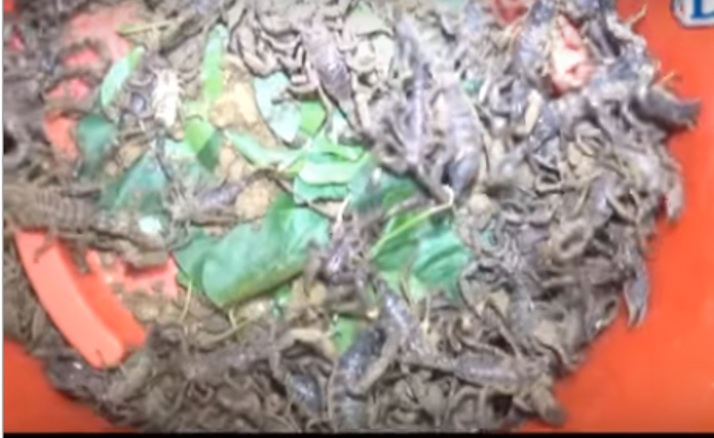
Scorpion colony found in Gampaha
In a rare occurrence, a colony of about 2,000 scorpions was found in an anthill near a house in Kotagedara, Gampaha by wildlife officials.
Residents said about 2,000 scorpions had stormed into the road when a lorry had accidently smoked out the anthill. Wildlife official who arrived at the location had captured about 250 scorpions and said the species would be released to a sanctuary.
http://www.dailymirror.lk/article/Scorpion-colony-found-in-Gampaha-127168.html#sthash.uys0Mqkb.dpuf

Elephant shot at after it goes on rampage
The Wildlife Conservation Officers opened fire at a she-elephant when it went on rampage after being saved from drowning in an abandoned well at Kombuwaittakulam in Omanthai.
https://youtu.be/0-w6xC7Jwbs
www.dailymirror.lk/article/Elephant-shot-at-after-it-goes-on-rampage–127396.html#sthash.X1qmGdyk.dpuf











